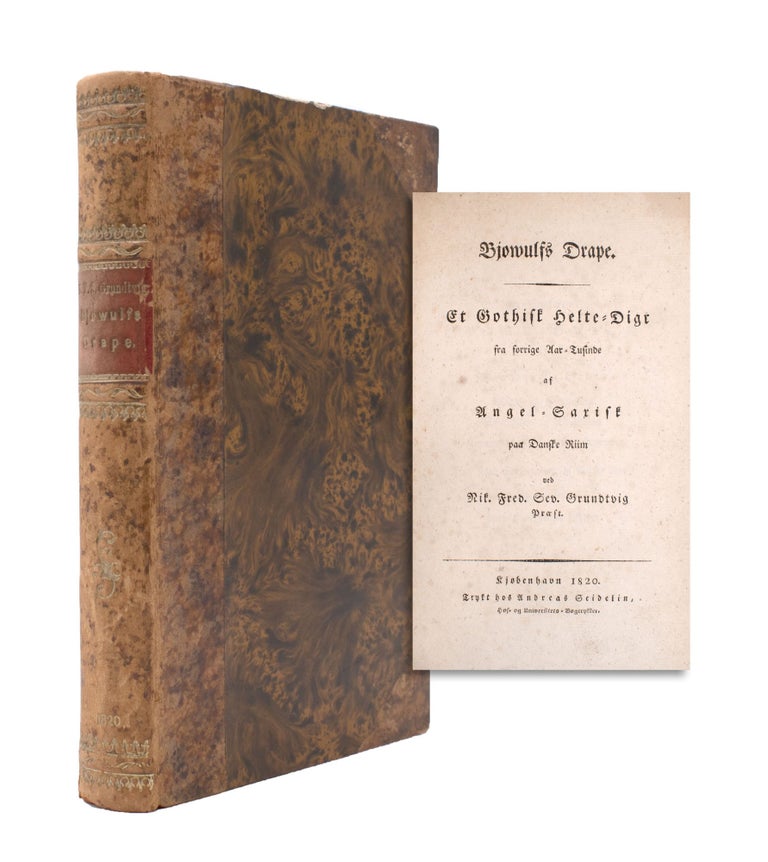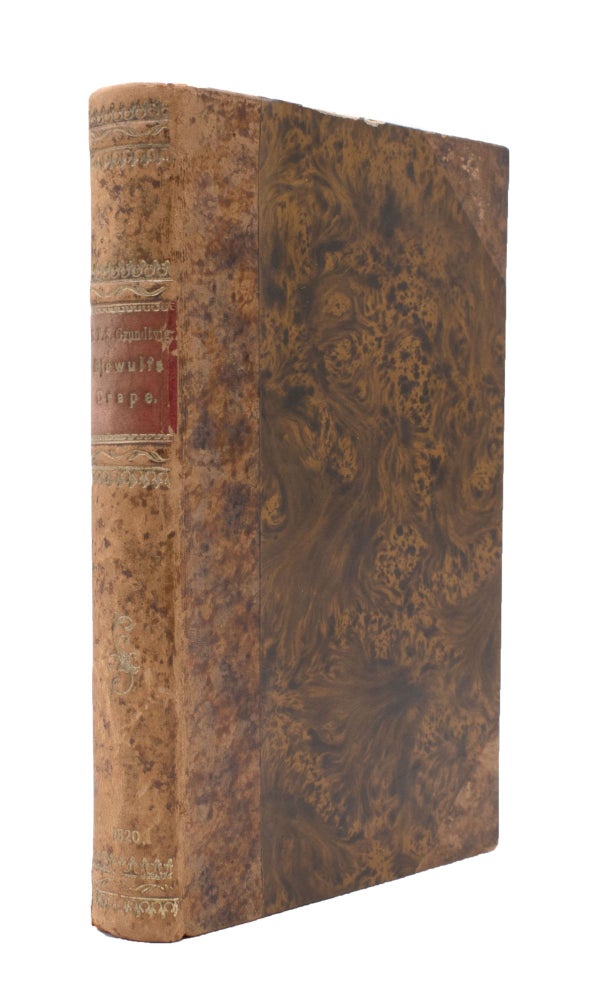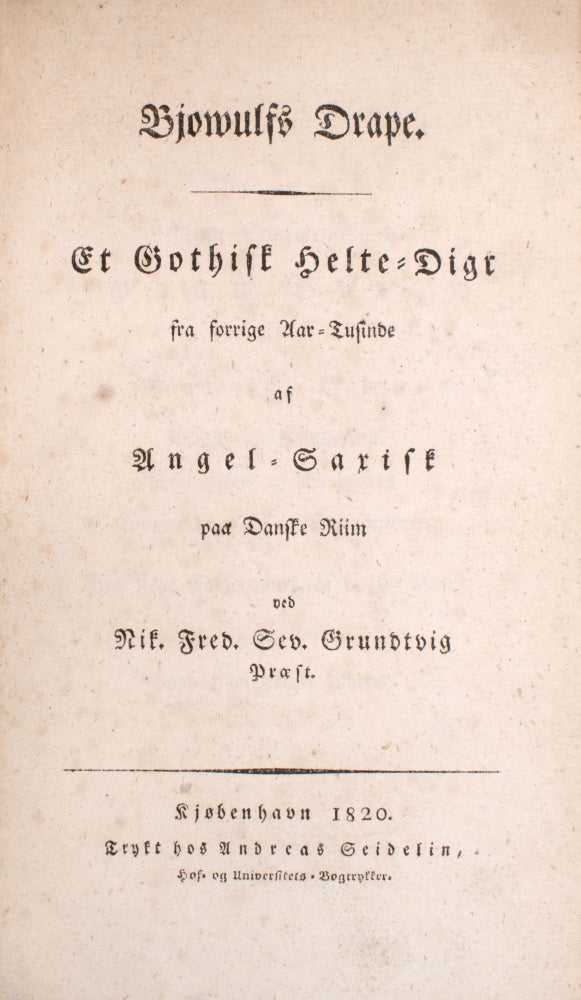The second translation of Beowulf, Very Scarce
Bjowulfs Drape. Et gothisk helte-digt fra forrige aar-tusinde, af angel-saxisk paa danske riim.
Copenhagen: Trykt hos Andreas Seidelein, 1820.
Price: $4,500.00
About the item
First edition in Danish, and the second complete translation in any language. lxxiv, 325 pp. 8vo. The second translation of Beowulf, Very Scarce. Contemporary three-quarter mottled calf over matching marbled paper-covered boards, red calf spine label, stamped in gilt; edges stained red; marbled endpapers; scattered minor foxing to text leaves; small bookseller's ticket top corner verso of front blank; book-plate of Sigurd Trier on front paste-down.8vo. Photo/off/2.
Item #345988
A handsome first edition copy of N.F.S. Grundtvig's (1783-1872) Danish translation of the classic epic poem Beowulf. Grundtvig was a bishop and the first great Beowulf scholar, and his Danish translation is only the second complete translation from the original Old English into any language, and is the first translation into a modern language. This complete translation is preceded only by Icelandic scholar Grímur Jónsson Thorkelin's (1752-1829) complete Latin translation of 1815. Partial translations were completed as early as 1805, first by English historian Sharon Turner into modern English, then followed by another partial modern English and Latin translation by John Josias Conybeare, in 1814. Following Grundtvig's translation a partial German translation appeared by Wilhelm Karl Grimm (of the Brothers Grimm) in 1829. The first complete English translation, by John Kemble, did not appear until 1837.
Only a single manuscript copy of Beowulf in Old English survives, and is held in the British Library (BL Cotton Vitellius A.XV). Likely created sometime in the 10th or 11th century, the first half of the manuscript's 1,000-plus year history is unknown. Around 1563 it was acquired by English scholar Laurence Nowell (1530-ca. 1570), and by the early 17th century it was in the possession of Sir Robert Bruce Cotton (1570/1-1631). In 1702 it came under the ownership of the Crown when it was donated, along with Cotton's Library, by Robert's grandson, Sir John Cotton. In 1731, the Cotton library, including the Beowulf manuscript, was placed in storage at the Ashburnham House in London, where it was subsequently damaged by a fire that occurred there that October. In 1853 it moved along with Cotton's Library to the newly established British Museum where it served as one of the foundational collections.
In the late 18th century, during a period of growing national consciousness in Denmark, scholar Grímur Jónsson Thorkelin travelled to the United Kingdom under the patronage of the Danish government to study Danish and Norwegian antiquities and manuscripts. It was there while working in the British Museum that he uncovered the Beowulf manuscript in October 1786 while researching other manuscripts. He and a copyist then completed two transcripts of the manuscript, sometime between 1789-91. Although Thorkelin's subsequent 1815 Latin translation rescued the text from oblivion, as the manuscript's post-fire condition and poor handling led to the continuing loss of some of the text, it was noticeably full of errors and inaccuracies and was met with criticism, especially from N.F.S. Grundtvig. A feud between Grundtvig and Thorkelin ensued, and at the behest of Thorkelin's patron, Johan von Bülow (1751–1828), a former Privy Councillor under Prince Frederik (later King Frederik VI of Denmark-Norway), Grundtvig was tasked to create a superior and more faithful Danish translation using the original manuscript. Grundtvig's translation would cement him as the first and one of the preeminent scholars of this classic Anglo-Saxon work.




